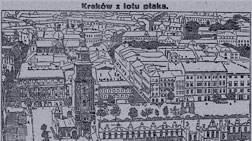Guidelines for Submitting Project Proposals to SEEMP
Proposals should be submitted using the Proposal Template. The proposals will then be made available in the globalCollections platform.
You may open the form, add information about your proposed project in the appropriate fields, and then email the completed proposal to the contacts listed below.
Objectives
In general, projects funded by SEEMP reflect one or more of the following goals: to preserve important and unique specialized archival and print collections already in our libraries; to broaden and strengthen holdings of serial publications not currently available, including geographic and subject areas not well represented in our collective libraries; and to provide better access (i.e. loan copies) to relatively inaccessible serial holdings in North American libraries.
Contacts
Collections Services Librarian
Marlies Bauhofer
Current Chair, SEEMP Executive Committee
2020-2022 = Alla Roylance [ar4310 at nyu.edu]
Calendar
| Oct 31 | First Draft (Optional) In order to have your proposal reviewed by the Executive Committee and the membership-at-large before the annual meeting, it is suggested that a draft proposal be submitted by this date One copy should be sent to the SEEMP Chairman and another to the CRL representative. Though e-mail is the preferred format, proposals may also be submitted by fax.
[NOTE: this date assumes that the ASEEES/SEEMP meeting is held in mid-November. For those conferences that are scheduled earlier or later than November, one should submit first drafts no later than two weeks before the scheduled meeting]. |
| Nov | SEEMP Annual Meeting held in conjunction with the ASEEES convention, generally scheduled for the second or third week in November. Draft proposals can be submitted to SEEMP's membership for comments at any time up to the final submission date, but note that this meeting is the only opportunity for in-person discussion of your proposal by SEEMP members before voting takes place. Comments made at the time of voting are often helpful, but may result in a year's delay if the membership votes for resubmission. |
| Dec 15 | Written Comments If a draft proposal has been submitted and discussed, but you were not able to attend the SEEMP general meeting, written comments on your draft proposal will be provided by the SEEMP secretary by this date. |
| Feb 1 | Final submission date for all proposals |
| Feb 15 | All proposals distributed to SEEMP membership |
| Mar 1 | Ballots sent to all SEEMP members |
| Mar 15 | Deadline for returning ballots to SEEMP Secretary |
| Mar 20 | Notification of results |
| Mar 25 | Executive committee compiles and relays members' comments to project sponsors |
I. General Categories of SEEMP Projects
- Unique, specialized collections in your own library which need preservation, with the collection consisting either of published or archival/manuscript material or any combination of the above.
- Preservation by filming
- Preservation in digitized format (to be housed and made accessible on your library's computer server, or perhaps CRL's servers.)
- Filming of serial titles which do not yet exist in microformat. These may be titles that are already held in paper copy in one or more North American libraries OR may not yet have any North American library location, but would broaden and strengthen North American holdings.
- If your library has incomplete (or scattered) holdings, in order to obtain as complete a run as possible for each title, you might:
- Work with other North American libraries to obtain missing issues/volumes
- Work with commercial vendors to obtain missing issues/volumes
- Work with one or more libraries or publishers in the country of origin to obtain missing issues/volumes
- Once a complete run (or as close to complete as is reasonably possible) is identified and copyright permission obtained, the title can be filmed by:
- A commercial vendor interested in your project
- A library in the country of origin
- CRL photoduplication
- Your own library's photoduplication department
- The purchase of microform sets or one or more serial titles already available commercially, but which are held by few or no North American libraries and which may not be easily available for Interlibrary Loan.
II. Points to be included in proposals (as appropriate)
Especially in those cases where one or more other libraries and vendors are involved, you are urged to work out and document as many of the details of the project as possible before submission. This will avoid requests for resubmission, which might delay your project for a year or more.
- A detailed description of the project, including the library or libraries holding segments of the material and a list of all contact persons at each institution.
- Uniqueness, value and/or research significance of the material to be preserved and made accessible to SEEMP members. Be as specific as necessary in describing the material in order to convey its importance.
- Project feasibility/ history of the project
- Estimated costs/budget
- For purchase of material
or- For filming
- Number of exposures x $.46 per exposure
- Number of reels† (650 exposures per reel) x $39.37 per reel
- Number of sets/copies needed
- Other costs
- Total cost of project
- Estimated duration of project
- Supporting documentation (list of titles to be filmed, tentative vendor agreements, etc.)
- Drafted by June Farris and Alan Pollard October 1999 and approved by the membership November 19, 1999 as amended.
